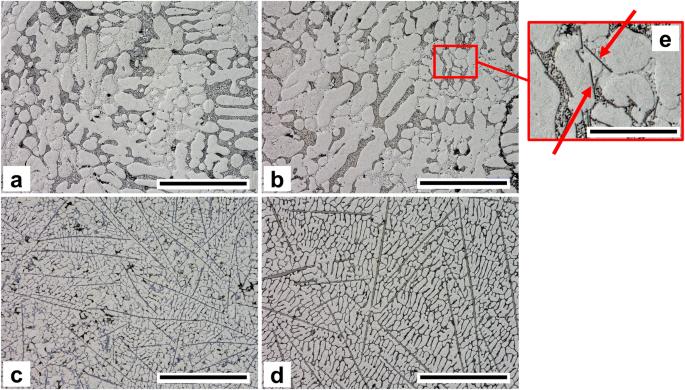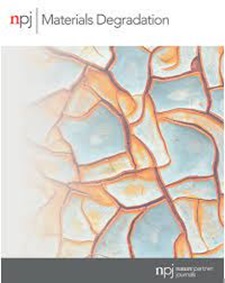Effect of antimony additions on the microstructure and performance of Zn–Mg–Al alloy coatings
IF 7.6
2区 材料科学
Q1 MATERIALS SCIENCE, MULTIDISCIPLINARY
引用次数: 0
Abstract
Microscopy, electrochemical techniques and mechanical testing are used to investigate the effect of varying antimony additions (0.45–1.8 wt%) on the microstructure and corrosion properties of zinc-magnesium-aluminium coating alloys. Samples were produced by splat casting to produce high cooling rates similar to those seen in a continuous galvanising line. X-Ray Microscopy reveals that the Sb additions produce disk-shaped Mg3Sb2 intermetallics, subsequently reducing or eliminating the MgZn2 eutectic. Electrochemical testing in 1 wt% NaCl shows that the Mg3Sb2 phase is cathodic with respect to the bulk alloy with slower oxygen reduction kinetics. The decrease in eutectic content leads to less intense anodic activity. The combined effect is anodic and cathodic deactivation, which leads to a 43% reduction in corrosion rate as measured through LPR compared to the base alloy. This work shows that quaternary additions to ZMA coating alloys can be a potential route to improved corrosion resistance for galvanic protection.

添加锑对锌镁铝合金涂层微观结构和性能的影响
本研究利用显微镜、电化学技术和机械测试来研究不同锑添加量(0.45-1.8 wt%)对锌-镁-铝涂层合金的微观结构和腐蚀性能的影响。样品通过溅射铸造生产,以产生与连续镀锌生产线类似的高冷却速率。X 射线显微镜显示,添加的锑会产生盘状 Mg3Sb2 金属间化合物,从而减少或消除 MgZn2 共晶。在 1 wt% 的 NaCl 溶液中进行的电化学测试表明,与块状合金相比,Mg3Sb2 相为阴极,氧还原动力学较慢。共晶含量的降低导致阳极活性减弱。阳极和阴极失活的综合效应导致通过 LPR 测得的腐蚀速率比基本合金降低了 43%。这项研究表明,在 ZMA 涂层合金中添加季化合物是提高电化学保护耐腐蚀性的潜在途径。
本文章由计算机程序翻译,如有差异,请以英文原文为准。
求助全文
约1分钟内获得全文
求助全文
来源期刊

npj Materials Degradation
MATERIALS SCIENCE, MULTIDISCIPLINARY-
CiteScore
7.80
自引率
7.80%
发文量
86
审稿时长
6 weeks
期刊介绍:
npj Materials Degradation considers basic and applied research that explores all aspects of the degradation of metallic and non-metallic materials. The journal broadly defines ‘materials degradation’ as a reduction in the ability of a material to perform its task in-service as a result of environmental exposure.
The journal covers a broad range of topics including but not limited to:
-Degradation of metals, glasses, minerals, polymers, ceramics, cements and composites in natural and engineered environments, as a result of various stimuli
-Computational and experimental studies of degradation mechanisms and kinetics
-Characterization of degradation by traditional and emerging techniques
-New approaches and technologies for enhancing resistance to degradation
-Inspection and monitoring techniques for materials in-service, such as sensing technologies
 求助内容:
求助内容: 应助结果提醒方式:
应助结果提醒方式:


